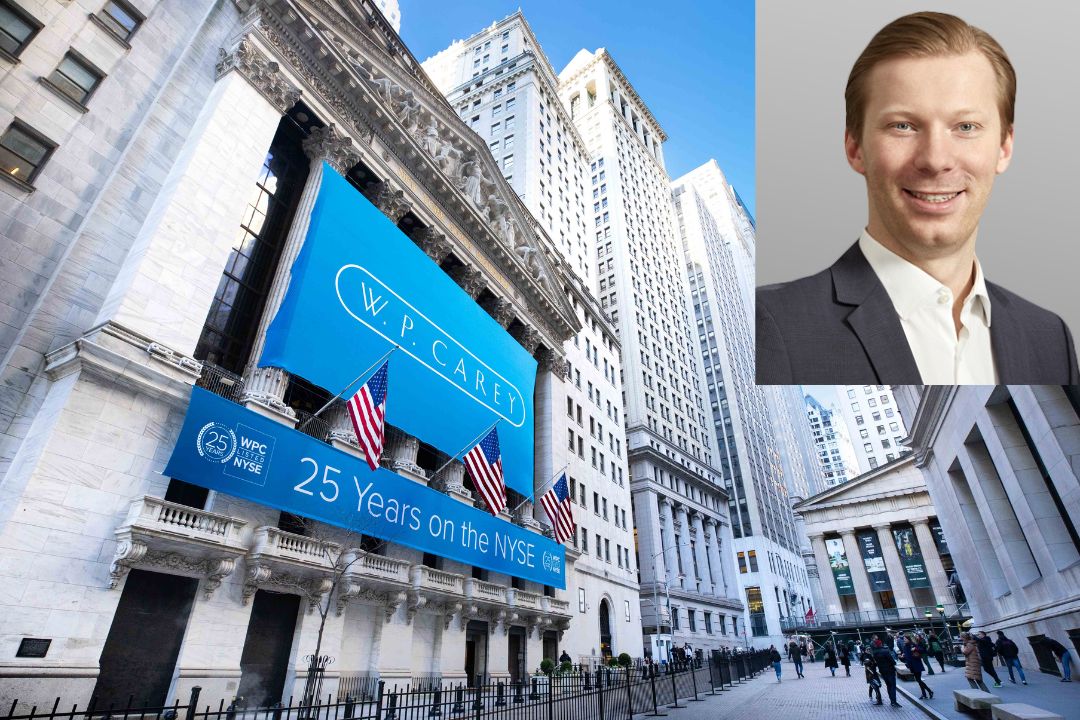It was in Warsaw earlier this summer that I met with Karolis Adlis, Executive Director of W.P. Carey. It had been a while since I’d been in touch with the company, so I was curious how an investor that’s only ever interested in sale and leasebacks was handling the new environment. I began by asking about the sectors that currently looked the most attractive to him.
We are fundamentally sector-agnostic, meaning we always begin by asking how important the property is for the company – what we call, the “mission criticality” of an asset. It can be anything from a sawmill to a bakery to a food production unit – as long as the real estate is important to the tenant and their operations, and you are able to put a long lease on it, we’re interested.
However, there are some asset classes that stand out compared to others. For example, we invest in industrial and logistics, and this includes last mile logistics, big box logistics, automated warehouses or light asset heavy manufacturing. In terms of other asset classes, we also like retail. That means grocery stores, especially small format stores in densely populated areas. We like DIY, sports retail and we’ve also done car showrooms.
The one thing that we don’t really touch anymore is offices. This is because it’s very hard to tell a story about an office and call it mission critical because, when the lease expires, it can be very cheap to relocate to another asset.
Did you stop with offices pre- or post-Covid?
We never did too much office, but we began to slow down in 2018 and 2019. I think the pandemic was probably the final nail in the coffin. We did office deals with long leases, but the tenant has a lot of incentives to relocate if they don’t want to stay. That’s why we like other classes such as manufacturing for our business.
You mentioned that high interest rates are good for you, break it down?
S&LB’s have gotten a lot more competitive now compared to bank financing. In a low-interest rate environment companies looking to raise financing can go to a bank where they can source cheap and competitive capital. However, in today’s environment, interest rates on bank debt have risen significantly, making it less appealing to corporates. Cap rates on sale-leasebacks have risen significantly less – making them more attractive on a relative cost of capital basis.
So, it gives you a larger pool of potential clients to work with?
100%. Often companies now are coming up to a fixed term date for refinancing. They look at banks and see they’ll have to pay 6-7% financing. With a sale and leaseback, they have the security of locking in the rate in for many years. In this way, we’re seeing a lot more companies considering S&LB’s now.
Are they trying to solve a temporary issues (high interest rates) with a pretty long-term solution. That’s a big mindset change?
Mature companies typically have a very diverse pool of capital. They’ll have equity, they’ll have debt, including revolving debt, bonds and sale and leaseback. It’s a way of diversifying your capital. Also when we were in a low interest rate environment, we were busy and doing a record amount of deal volume. I’m not saying in a low interest rate environment you have no business and that you’re only competitive when rates are high – that’s not the case. It’s just that more companies consider it when other alternatives – like bank financing – become less attractive.
No one has a crystal ball. No one can definitively say when interest rates will go down and by how much. My view is that rates were 8% before the financial crisis after which we entered into an extended period of artificially low interest rates – and I do not think we’re going back to that level. Crucially, I also do not think that the CFOs of the companies think we’re going back to that.
Your potential clients realize that the last ten years weren’t normal — and that we’re probably not going back to that?
The crux of the question really stems from why companies want to conduct a sale and leaseback. If you go to a bank, you get financing and you have capital set for 2, 3 or maybe 5 years. However, following this, you have to worry about refinancing. And if you go to a bank you get, at best, 60 or 70% LTV. Comparatively, if you do a sale and leaseback, you pull cash out of the asset that it was locked into. If you invest that cash into growing your business, or other growth segments such as R&D, you get 100% financing because you’ve sold the asset – you get its full value.
In other words, it always makes sense to do sale and leaseback, but high interest rates have a tendency to focus the minds of companies with assets.
100% – and especially once you see that refinancing is going to cost you a fortune when compared to getting the full value of the asset through a sale and leaseback.
What’s the cost of your money?
We’re a public company. So, our equity is public equity, stocks issued on the New York Stock Exchange. The cost of equity is the dividend that we pay to shareholders. The dividend yield on our stock today is somewhere between 5.5 to 6% and that is essentially the cost of issuing equity. Our debt is public debt as well, meaning we’ve issued bonds. American bonds for American transactions and bonds issued in euros for European transactions. The last bond we did was roughly €500 million over a year ago and that was 10-year money with a 0.98% coupon. If we don’t like where the stock market is, we can issue bonds. And conversely, if the bond market isn’t attractive, we can issue stocks.
You’re signing ultra-long leases. How is the rent indexation issue handled?
It varies from asset to asset, but our global WALT is just over 11 years. We’re always trying to extend that, so we try to have a lease term of at least 10 years. It’s simple logic. If I’m buying something that’s very bespoke, like a manufacturing building, it is critical to the operation of a business so I want to make sure I have a long, long lease – 20 or 25 years. If I’m buying something more liquid like a replaceable logistics box and the worst happens and the tenant doesn’t renew or has to vacate, then I can tolerate a shorter lease, like 10 years, as it should be easier to re-tenant that building.
In America, the market standard is fixed indexation, 2% per year, although we’re seeing a significant number of our leases in the U.S. now tied to inflation. In Europe, the market standard has always been CPI linked indexation without a cap or a floor. And in the UK, the market standard was RPI linked indexation. This is important because as a company what we offer is long-term, inflation protected income to our investors.
Also in ThePrime





